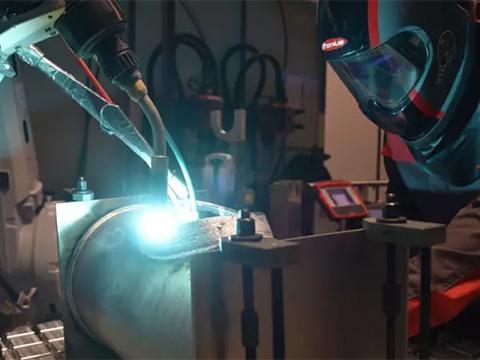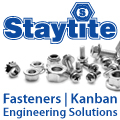
Posted to News on 18th Oct 2024, 09:00
Model qualification of an additively manufactured pressure vessel
Arc-based metal 3D printing is well on the way to radically changing metal component manufacturing. The near-net-shape additive manufacturing process with welding wire shapes three-dimensional objects by applying welding beads layer by layer, as the experts at Fronius explain.

Examples of arc-based metal 3D printing can be found in the fields of plant engineering, aircraft construction, and toolmaking or lightweight construction. This is particularly advantageous for complex geometries with a high proportion of machining. Here the process is more flexible and often more economical than machining or forming processes. There are also benefits in the spare parts business, prototype construction and small series production.
Standards for metal 3D printing are now available in North America, and are in progress for additively manufactured, unfired pressure vessels in Europe. Linde Engineering, MIGAL.CO,
Tailor-made and just-in-time components
Classic manufacturing techniques such as casting are often associated with the construction of complex moulds and tools. There are also lead times and development costs to consider. Companies that adopt metal 3D printing can significantly shorten their production cycles. Additive manufacturing processes not only drive the rapid production of sample parts (rapid prototyping), but also just-in-time manufacturing.
As such, they help to avoid risky single source situations - in other words, dependence on individual suppliers, and the associated high storage costs. When various components are needed, the correct "recipes" are selected in the software and "printed" as required. There are hardly any limits for component geometries. By contrast, topology and flow-optimized designs feature prominently in everyday production in additive manufacturingeven for large components.
CMT welding process ideal for metal 3D printing
3D printing works with various processes. Wire-based processes such as "Fronius Additive" melt the welding wire, building up the workpiece layer by layer. To stop too much heat flowing into the workpiece, they must be designed to apply as little energy as possible.
The MIG-based Cold Metal Transfer welding process (CMT) from Fronius is especially suitable for metal 3D printing of aluminium components. CMT is a "cool" dip transfer arc process that minimizes the heat input, despite its high deposition rate. This process is therefore ideal for additive welding, where the cyclical build-up of beads causes a high heat input.
CMT supports functions that are perfect for metal 3D printing. "Power correction" is a typical example. This function allows the electrical power to be precisely adjusted to the respective process phase while the deposition rate remains constant.
"With our CMT Additive Pro functions, specifically developed for additive manufacturing, such as power correction, or the Deposition Stabiliser that keeps the deposition rate constant, we can precisely control the power input and thus the height and width of the weld," explains Leonhard Reiter from Fronius R&D.
As a member of the "Joint working group for additively manufactured components under the Pressure Equipment Directive of the German Institute for Standardisation (DIN)", Fronius participated in the model qualification of an additively manufactured component. The working group assessed the applicability of the draft standard prEN 13445-14 to the components of unfired pressure vessels.
Drawing on their particular areas of expertise, the participating partners carried out material qualification, design review, process qualification, additive manufacturing, component and pressure testing, as well as full documentation of the process chain, at their respective locations, and a binding additive manufacturing procedure specification (AMPS) was subsequently created.
"The entire value chain, including all the monitoring details, is considered in the draft standard for prEN 13445-14, and in the previously published DIN/TS 17026. This ensures that the fundamental safety requirements defined in Pressure Equipment Directive 2014/68/EU can be met," says Dr Kati Schatz, Linde Engineering, outlining what is in the forthcoming standard.
"All the details are included. This applies in particular to the material requirements, design, qualification of the additive process, manufacturing and testing, as well as acceptance and documentation. There is hardly any difference between this procedure and that for conventionally manufactured pressure vessels. Even though it has yet to provide the 'presumption of conformity' of the intended harmonised standard, and there will still be revisions, the specification can nevertheless serve as a guide for all those involved in the additive manufacturing process of pressure equipment."





